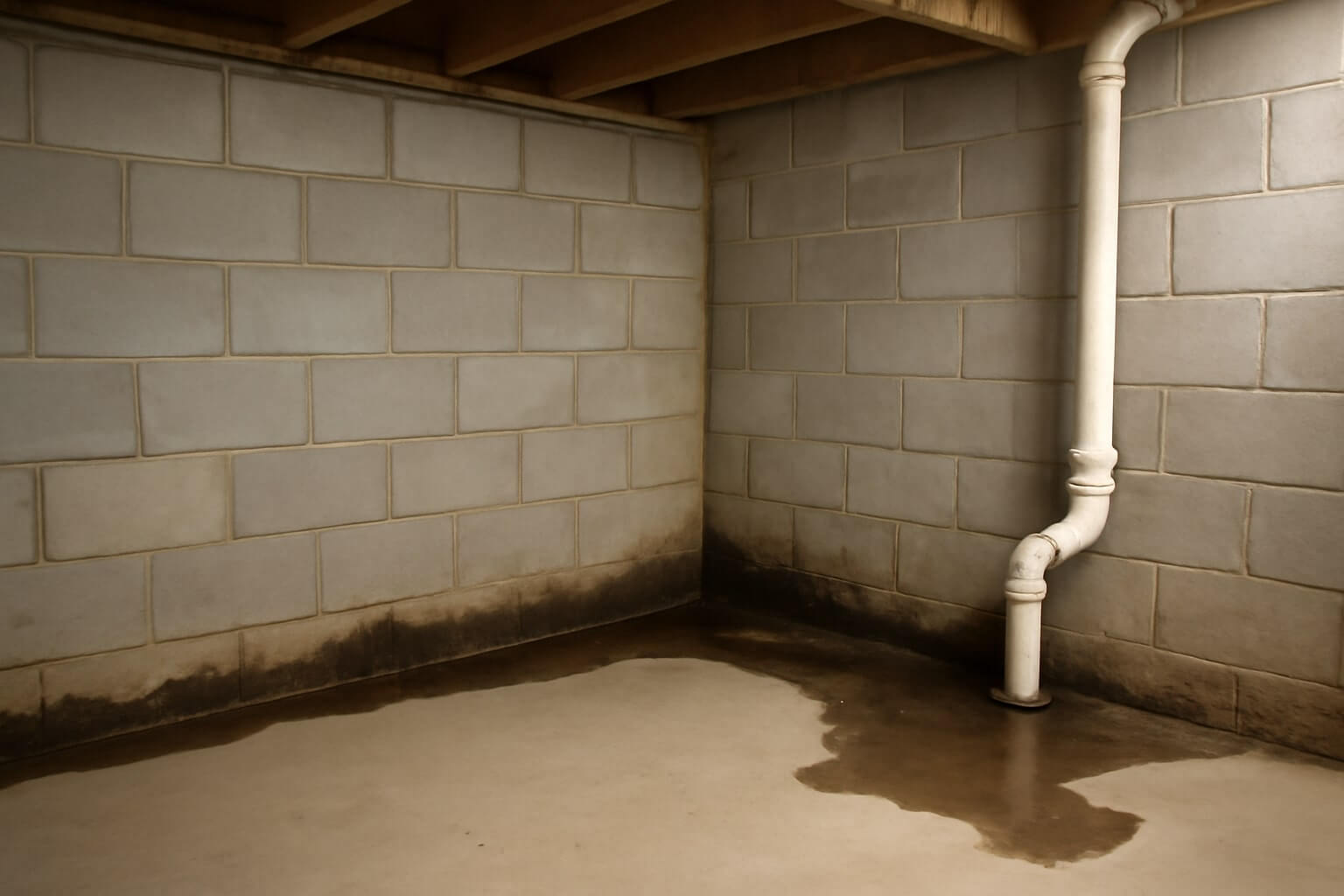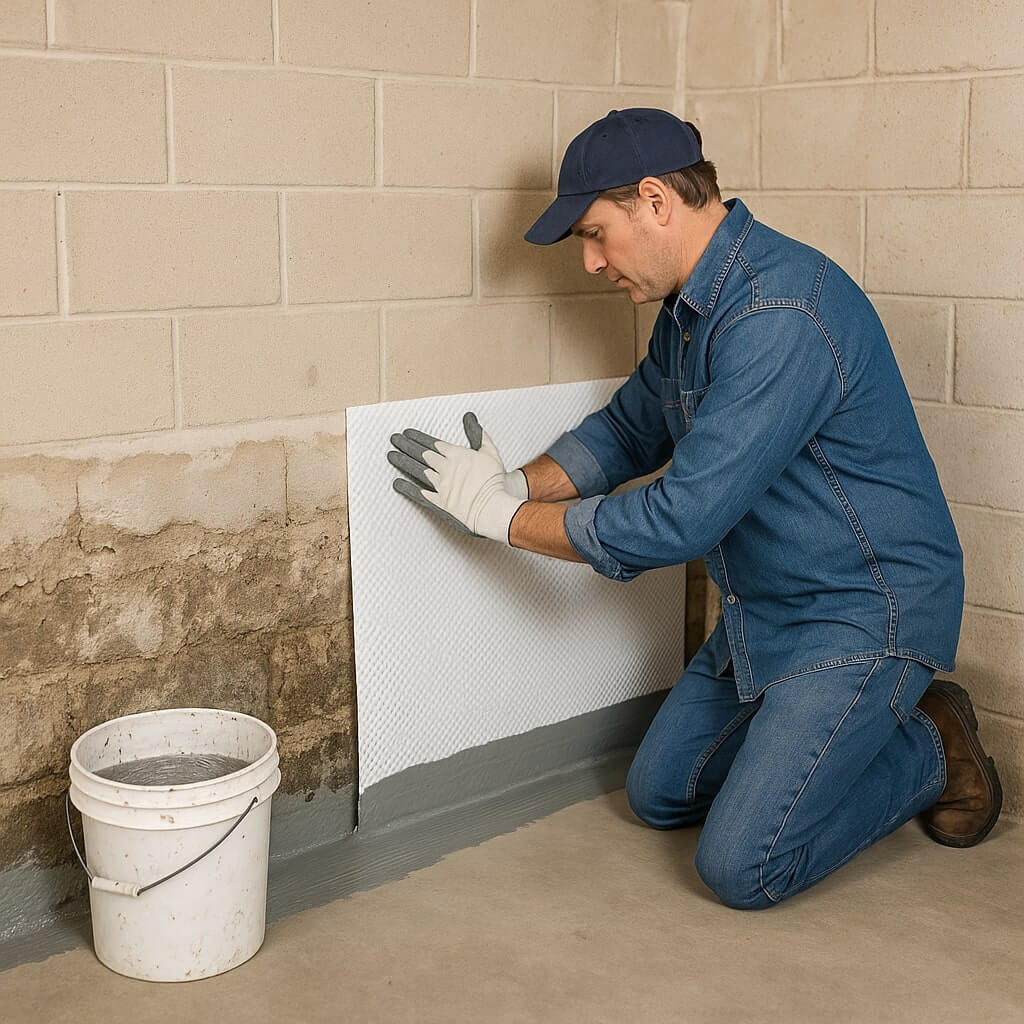When it comes to basement waterproofing, several common mistakes can lead to serious issues. You might overlook the importance of proper drainage systems, use materials that aren’t up to par, or ignore existing water problems in your space. Additionally, neglecting ventilation and humidity control can create an environment ripe for mold. Understanding these pitfalls is vital, as the consequences can be significant. What steps can you take to guarantee your basement remains dry and structurally sound?
Key Takeaways
- Neglecting proper drainage systems can lead to water pooling and structural damage around the foundation.
- Using inadequate waterproofing materials allows moisture infiltration, risking mold growth and basement integrity.
- Failing to address existing water issues before waterproofing can exacerbate leaks and damage.
- Overlooking ventilation and humidity control leads to stagnant air and increased mold risk.
- Skipping professional assessments can result in missed critical issues and non-compliance with building codes.
Neglecting Proper Drainage Systems
When you overlook proper drainage systems in basement waterproofing, you’re setting yourself up for potential water damage.
Effective drainage installation is vital to redirect water away from your foundation. Without it, rainwater can pool, leading to leaks and structural issues.
Effective drainage installation is essential for protecting your foundation from pooling rainwater, leaks, and structural damage.
Regular drainage maintenance guarantees that your system remains clear of debris and functions at its best. Inspect and clean your drains periodically to prevent blockages that can cause overflow.
Additionally, consider adding sump pumps or French drains to enhance your system’s effectiveness.
Using Inadequate Waterproofing Materials
Choosing inadequate waterproofing materials can lead to significant issues in your basement, especially if you’re not aware of the long-term consequences.
Improper material selection often stems from a lack of understanding of your specific environment or the properties of available materials. Using inferior products can compromise your basement’s integrity, allowing moisture infiltration and mold growth.
Additionally, subpar installation techniques can exacerbate these problems, as even the best materials won’t perform effectively if not applied correctly.
It’s essential to invest in quality waterproofing materials and guarantee they’re installed by knowledgeable professionals to protect your basement from future water damage.
Failing to Address Existing Water Issues
Although you might think waterproofing your basement is a straightforward solution, failing to address existing water issues can lead to more severe problems down the line.
Waterproofing your basement may seem simple, but neglecting current water issues can cause bigger problems later.
To effectively manage these issues, you should follow these steps:
- Conduct a thorough moisture level assessment to determine the extent of the problem.
- Perform water source identification to locate leaks or entry points.
- Repair any existing cracks or gaps in walls and floors.
- Implement drainage solutions to divert water away from the foundation.
Overlooking Ventilation and Humidity Control
Neglecting proper ventilation and humidity control in your basement can greatly undermine your waterproofing efforts. A balanced humidity regulation is essential to prevent mold growth and structural damage. Installing effective ventilation systems guarantees fresh air circulation and helps maintain ideal humidity levels.
| Ventilation Type | Benefits | Recommended Use |
|---|---|---|
| Exhaust Fans | Removes moist air | High humidity areas |
| Dehumidifiers | Reduces humidity levels | Damp basements |
| Air Vents | Promotes airflow | General ventilation |
Implementing these solutions will enhance your basement’s waterproofing and protect your home effectively.
Skipping Professional Assessment and Guidance
When you skip a professional assessment and guidance for your basement waterproofing project, you risk overlooking critical issues that could lead to costly repairs down the line.
Skipping professional assessment for basement waterproofing may lead to overlooked issues and costly repairs in the future.
A professional evaluation guarantees you address all potential problems. Here are key reasons to seek expert consultation:
- Identifying Hidden Issues: Experts can spot water damage or structural weaknesses you might miss.
- Tailored Solutions: Professionals provide customized strategies based on your basement’s unique needs.
- Regulatory Compliance: They confirm your project meets local building codes.
- Long-term Protection: Expert advice helps implement sustainable solutions to prevent future issues.
Conclusion
Inadequate basement waterproofing often stems from common mistakes that can be easily avoided. By ensuring proper drainage systems, choosing high-quality materials, addressing existing water challenges, and maintaining effective ventilation and humidity control, you can greatly enhance your basement’s resilience against moisture. Don’t underestimate the value of professional assessments; they provide tailored solutions that address specific issues. By avoiding these pitfalls, you’ll protect your basement from costly damage and create a healthier living environment.




